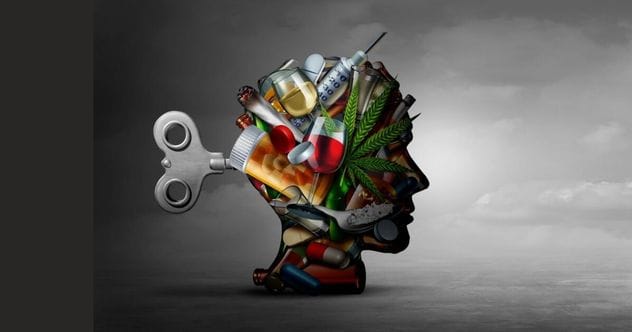Addiction is a complex condition that often makes us think of drugs or alcohol. But did you know that many everyday activities and even seemingly harmless indulgences can turn into serious addictions? It’s a psychological challenge that creates a relentless urge to engage in specific behaviors, often leading to negative outcomes and changes in how our brains work. Constant cravings and a lack of self-control become the norm.
Sadly, the rise of various addictions in the U.S. is contributing to widespread unhappiness and an increase in mental health issues like depression. It’s more important than ever to be aware of what these addictions are and how they can impact our lives. Let’s take a closer look at the top 10 addictions affecting people across the United States today.
10. Internet Addiction
Can you imagine a day without your smartphone or computer? For most of us, that’s a tough thought. Our daily lives, from getting around town to accessing healthcare and ordering food, heavily rely on the internet. The benefits are clear, but we don’t often stop to think about the potential for addiction.
In 2021, research showed that a staggering 77% of Americans were online daily. While scrolling through TikTok or streaming movies might seem harmless, for some, the constant urge to be online can disrupt their entire life. People might isolate themselves, damage personal relationships, or even neglect basic hygiene because of their internet use. It becomes an addiction when browsing the web takes priority over essential life aspects like work, health, and relationships.
Internet addiction isn’t just one thing; it’s a wide term covering various impulse-control problems related to smartphones and computers. This can include obsessions with online relationships, compulsive online shopping or gambling (net compulsions), an uncontrollable need to find information, or excessive online gaming.
9. Food Addiction
It might sound surprising to call food an addiction because, unlike harmful drugs, we all need food to survive. However, food addiction is a real struggle for many, and the rising obesity rates in the U.S. paint a part of this picture. Some estimates suggest that at least 5% of the U.S. population battles food addiction, affecting women more often than men globally (around 7% for women and 3% for men).
Similar to drug addiction, food addiction can involve intense cravings and building up a tolerance. Cravings show up as an obsessive need to eat, even when facing negative health or social consequences. Those with food addiction may find they need to eat more and more food to get the same pleasurable feeling or dopamine release. While the exact causes aren’t fully understood, research points to factors like genetics, brain chemistry imbalances, and using food to cope with stress.
8. Gambling Addiction
The internet has made gambling incredibly accessible through countless betting sites and apps, contributing to its widespread nature. While gambling is legal and often enjoyed responsibly, the fun and social aspect can make it hard for those with a problem to admit it. Shockingly, only about 20% of individuals who reported a gambling addiction acknowledged that their gambling might be an issue.
Recent figures suggest that around six million Americans are living with a gambling problem. Many might not recognize the warning signs until significant damage is done. Although gambling addiction doesn’t pose direct physical health risks like substance abuse, it can drastically lower one’s quality of life and often leads to other issues like substance abuse and depression. Furthermore, gambling problems are linked to increased friction in relationships, sometimes resulting in domestic violence. Children growing up with parents who have gambling addictions are also at a higher risk of developing mental health issues and drug problems. Gambling addiction can also fuel crime, as individuals may resort to fraud, forgery, shoplifting, or theft to fund their habit.
7. Sex and Pornography Addiction
The internet, a truly remarkable invention, has also paved the way for various addictions, including an addiction to pornography. The concept of sex and pornography addiction is somewhat controversial, with some experts and therapists debating its existence. This disagreement makes it challenging to define and recognize when someone is struggling with an addiction to adult content.
Despite the debate, it’s estimated that approximately 3% to 6% of people in the U.S. struggle with what could be classified as sex or porn addiction. A significant portion of internet downloads, about 35%, are related to pornographic material, though many who view it don’t develop an addiction. The problem arises when someone feels an obsessive compulsion to view adult content, leading them to take irresponsible risks. Other signs pointing to a potential porn addiction include:
- Feeling dissatisfied with an otherwise healthy sex life.
- Experiencing relationship problems due to dissatisfaction with a partner.
- Engaging in risky behaviors, such as viewing content at work or in inappropriate settings.
The easy access provided by the internet fuels the prevalence of pornography and sex-related compulsive behaviors. This alsoheightens the risk of minors and teenagers being exposed, potentially leading them to develop unhealthy perspectives on sexual relationships.
6. Heroin Addiction
Heroin, a powerful opioid drug, is derived from the seed pods of the opium poppy plant, which is mainly grown in regions like Southeast and West Asia, Colombia, and Mexico. It can appear as a white or black powder, or as a dark, sticky substance known as black tar heroin. Heroin is notoriously addictive. Sometimes, users mix it with cocaine, a practice called “speed-balling,” to intensify its effects.
This drug works by binding to receptors in the brain that control pain, pleasure, and sleep, altering these functions to create an “intense rush of serotonin.” This rush is often accompanied by a mix of feelings, a dry mouth, and a warm sensation on the skin. Once this initial high fades, users might feel nauseous, vomit, or experience severe itching. Depending on the dose, if mental functions are impaired for too long, it can slow breathing and heart rate to dangerous, sometimes life-threatening, levels.
A key reason heroin is so addictive is that users quickly develop a tolerance. After just a few weeks of regular use, a higher dose is needed to achieve the same intensity, quickly leading to addiction. The health risks are severe, including increased chances of infections like HIV, heart and liver diseases, collapsed veins, and fatal overdoses. Overcoming heroin addiction is incredibly difficult, with some individuals experiencing intense cravings years after they’ve stopped using. These cravings can be triggered by stress, specific people, places, or anything associated with their past drug use.
5. Cocaine Addiction
Cocaine holds the unfortunate title of the second most popular illegal recreational drug in the U.S., right after marijuana. Its significant use began in the mid-1980s and early 1990s, and it remains one of the most abused substances today. According to a 2020 National Survey on Drug Use and Health, about 0.8% of the population, or 1.9 million people, were regular cocaine users. Of these, only about a quarter used crack cocaine, meaning most consumed it in its powder form.
Cocaine is an extremely addictive drug that can lead to both physical and psychological dependence. It also carries numerous health risks, including high blood pressure, heart diseases, significant weight loss, mood disorders, strokes, and seizures. Despite its high potential for addiction, the Drug Enforcement Administration (DEA) classifies cocaine as a Schedule II controlled substance because it has limited medical applications. In hospital settings, it can be used to stimulate vital bodily functions such as heart rate, blood pressure, and body temperature.
4. Prescription Drug Addiction
The United States has witnessed a sharp increase in prescription drug abuse and addiction cases over the last five years, a significant jump compared to the previous decade. This rise can be attributed to factors like easier access, affordability, and a common misconception that prescription drugs are somehow safer or less harmful than illicit substances.
Unfortunately, abusing prescription drugs can lead to severe long-term health consequences that can quickly become chronic if not addressed. For instance, opioid abuse, which is the leading type of prescription drug addiction, has effects very similar to heroin addiction. These can include nausea, constipation, slowed breathing, and drowsiness. Similarly, the side effects of stimulants, such as those prescribed for conditions like ADHD, can resemble cocaine withdrawal symptoms, including high body temperature, paranoia, weight loss, and an irregular heartbeat. The most common cases of prescription drug addiction involve painkillers, stimulants like Ritalin, and sedatives used to treat anxiety, tension, and sleep disorders.
3. Marijuana Addiction
Marijuana is often viewed as a recreational drug in the U.S., and it’s currently legal for adult use in 21 states and Washington, D.C. However, it’s important to understand that long-term marijuana use can lead to addiction and an increased risk of developing mental health conditions like psychosis and schizophrenia. Many users associate marijuana with a boost in creativity and a sense of relaxation. This is because it affects brain areas responsible for attention, learning, coordination, and decision-making, which can create an illusion of enhanced creativity and energy.
In 2020, approximately 18% of Americans, translating to about 42 million people, reported using marijuana regularly. Research also indicates that about three out of every ten regular marijuana users struggle with a marijuana abuse problem, making it the third-most common addiction in the U.S. While the debate around marijuana’s safety and effects is often politicized, studies confirm that it can indeed be addictive and can cause significant withdrawal symptoms after prolonged abuse. Though proponents might argue that its medical benefits outweigh the negatives, this isn’t true for everyone. Studies show that teenagers who start using marijuana before the age of 18 are more likely to become addicted and abuse the drug. Additionally, using marijuana during pregnancy or while breastfeeding can pose various health risks to the child. Before buying into the popular ‘weed culture,’ it’s crucial to have accurate information about marijuana abuse and its potential dangers.
2. Alcohol Addiction
Despite its severe consequences, alcohol addiction has often been underestimated, largely because alcohol is legal and socially acceptable. These factors can make it challenging to recognize when someone is developing an addiction, often until the problem is quite advanced. There are many facts about alcohol that people might not be aware of. For example, as of 2019, at least 26% of American adults reported engaging in regular binge drinking.
Of course, not everyone who drinks, even regularly, will develop an alcohol addiction. However, this largely depends on how well individuals stick to recommended daily limits. In many instances, alcohol addiction starts as a seemingly harmless social habit that gradually turns into full-blown dependence, potentially leading to serious health issues like depression. For example, typical beverage servings in bars and restaurants often contain a higher percentage of alcohol than what is considered a standard drink.
Another common point of confusion is the difference between alcoholism and alcohol abuse. Alcoholism involves changes in the brain that cause a constant obsession with drinking, leading to drinking even when one doesn’t intend to. Alcohol abuse, on the other hand, refers to consuming alcohol in a way that leads to neglect of responsibilities and irresponsible behavior, such as drunk driving or missing work. It’s important to understand that alcohol abuse can eventually lead to alcoholism.
1. Nicotine Addiction
Approximately 30 million Americans are addicted to nicotine products, which include cigarettes, cigars, patches, nicotine gums, or snuff. This makes nicotine the most widely abused drug in the U.S., with reports indicating that even teenagers as young as 13 are becoming dependent on it. Many people addicted to nicotine mistakenly believe that smoking or using other nicotine products helps them relax. However, the opposite is true; recent studies show that nicotine use actually leads to increased stress levels. When the effects of nicotine wear off, users start to crave another dose, which can make them feel irritable and tense.
What’s truly shocking is that despite the widely publicized negative side effects of nicotine use, there hasn’t been a significant decrease in nicotine users in the U.S. in recent years. Research clearly shows that nicotine users tend to die 10 to 13 years earlier than non-users. Yet, this stark statistic often isn’t enough motivation to quit, perhaps because nicotine is one of the most addictive substances known. It’s crucial to note that most teenagers who start smoking or using some form of nicotine are likely to remain users for the rest of their lives. What makes nicotine even more dangerous is that many users switch to alternatives like e-cigarettes or cigars, mistakenly thinking they are healthier options.
In an age where health and appearance are major priorities for many, one might think that the threat of stained teeth, gum disease, and bad breath would deter people from nicotine. However, it seems that health campaigns may need to adopt different strategies to effectively combat this pervasive addiction.
Addiction, in its many forms, touches millions of lives. From the digital pull of the internet to the chemical grip of nicotine, these compulsions can subtly or overtly disrupt well-being, relationships, and overall quality of life. Recognizing the signs and understanding the diverse nature of addiction is the first crucial step towards awareness and, if needed, seeking support.
Which of these addictions surprised you the most, or do you have any experiences or thoughts you’d like to share? We invite you to leave your comment below and join the conversation.










